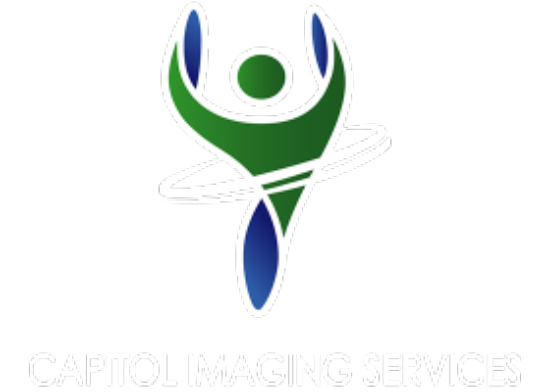Magnetic resonance imaging (MRI) uses a powerful magnetic field, radio waves and a computer to produce detailed pictures of the human anatomy. MRI images allow the radiologist to “see” soft tissue, such as muscles, fat and internal organs without the use of x-rays.
Because there is no ionizing radiation used in an MRI exam, Magnetic Resonance Imaging is a very popular tool in the medical community. In addition, MRI is a totally painless exam and has no known side effects.
The purpose of a breast MRI is to capture detailed images of the inside of the breast. It is not a replacement for mammography or ultrasound imaging, but rather a supplemental tool that has many important uses. This specialty exam offers valuable information about many breast conditions that cannot be obtained by the other imaging techniques commonly performed prior to a breast MRI.
At Capitol Imaging Services (CIS), we supplement the exam with Computer Aided Detection (CAD) that allows our radiologists to further evaluate and interpret each study more closely.
When would I get a Breast MRI?
A medical provider may recommend a breast MRI for a variety of reasons, including:
- further evaluation of abnormalities detected by mammography
- finding early breast cancers not detected by other tests, especially in women at high risk and women with dense breast tissue
- examination for cancer in women who have implants or scar tissue that might produce an inaccurate result from a mammogram. This test can also be helpful for women with lumpectomy scars to check for any changes
- detecting small abnormalities not seen with mammography or ultrasound; i.e. MRI has been useful for women who have breast cancer cells present in an underarm lymph node, but do not have a lump that can be felt or can be viewed on diagnostic studies
- assess for leakage from a silicone gel implant
- evaluate the size and precise location of breast cancer lesions, including the possibility that more than one area of the breast may be involved - this is helpful for cancers that spread and involve more than one area
- determining whether lumpectomy or mastectomy would be more effective
- detecting changes in the other breast that has not been newly diagnosed with breast cancer; there is an approximate 10 percent chance that women with breast cancer will develop cancer in the opposite breast, with a study indicating that breast MRI can detect cancer in the opposite breast that may be missed at the time of the first breast cancer diagnosis
- detection of the spread of breast cancer into the chest wall, which may change treatment options
- detection of breast cancer recurrence or residual tumor after lumpectomy
- evaluation of a newly inverted nipple change.
What Will I Experience?
Our technologist will position you on a padded scanning table which slides into our MRI where the imaging is performed. You will lie face down on your stomach with your breasts positioned into cushioned openings, which are surrounded by a breast coil. The breast coil is a signal receiver that works with the MRI unit to create the images.
An initial series of images will be taken. The patient is then given an intravenous injection of a special contrast material, called gadolinium, that helps to highlight various areas in the breast tissue. Several additional sets of images will follow.
During the exam, you will need to lie very still and breathe normally. You will be offered earplugs or a headset to reduce the noise of the MRI and help you relax. As the equipment scans, you will hear peculiar banging noises from the magnet which are completely normal. You may also feel a slight vibration or warmth in and around the breast as it is being scanned, which is also normal.
You will usually be alone in the exam room during the MRI procedure. However, the technologist will be able to see, hear and speak with you at all times using a two-way intercom.
A breast MRI will take approximately 45 minutes to complete.



